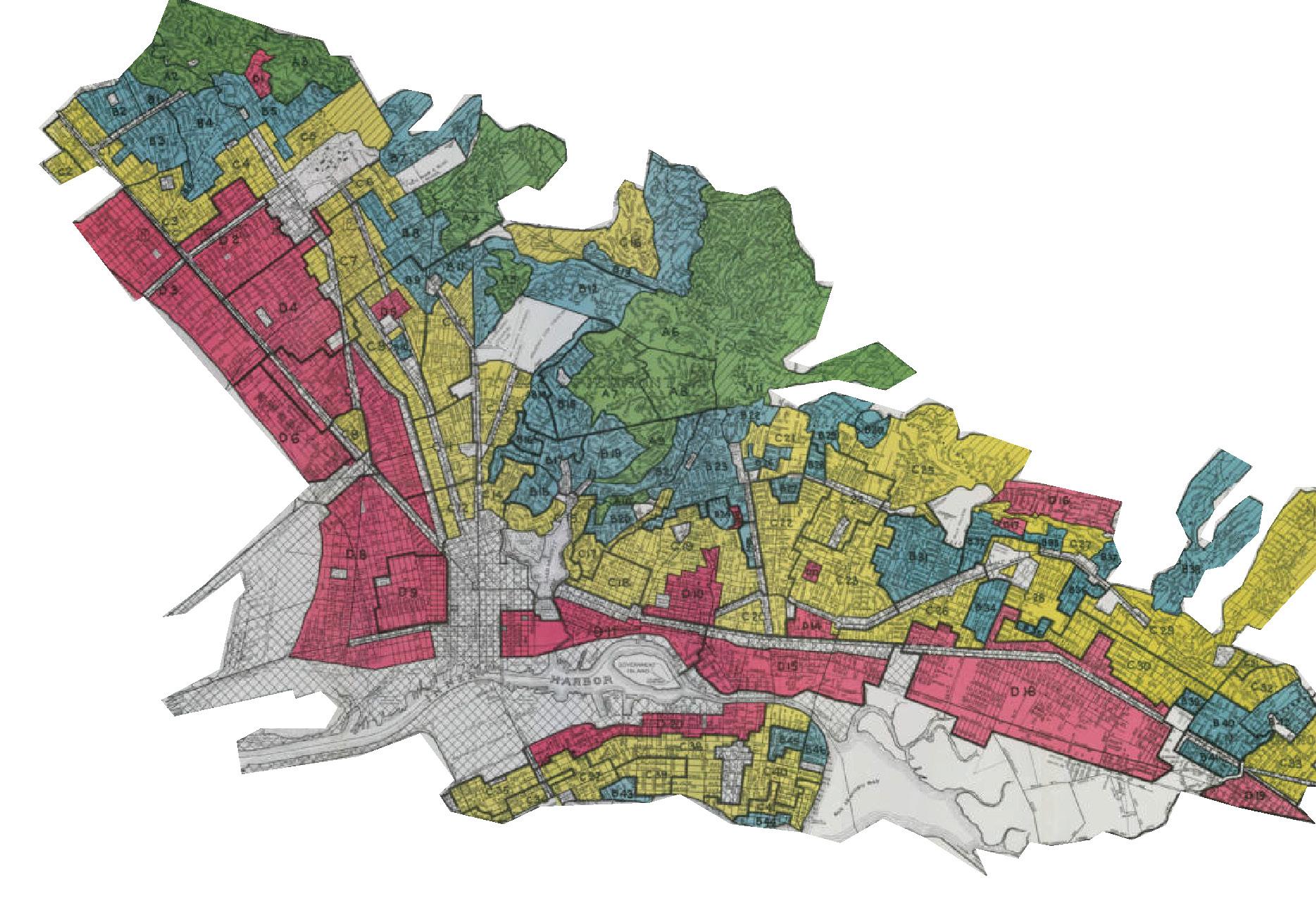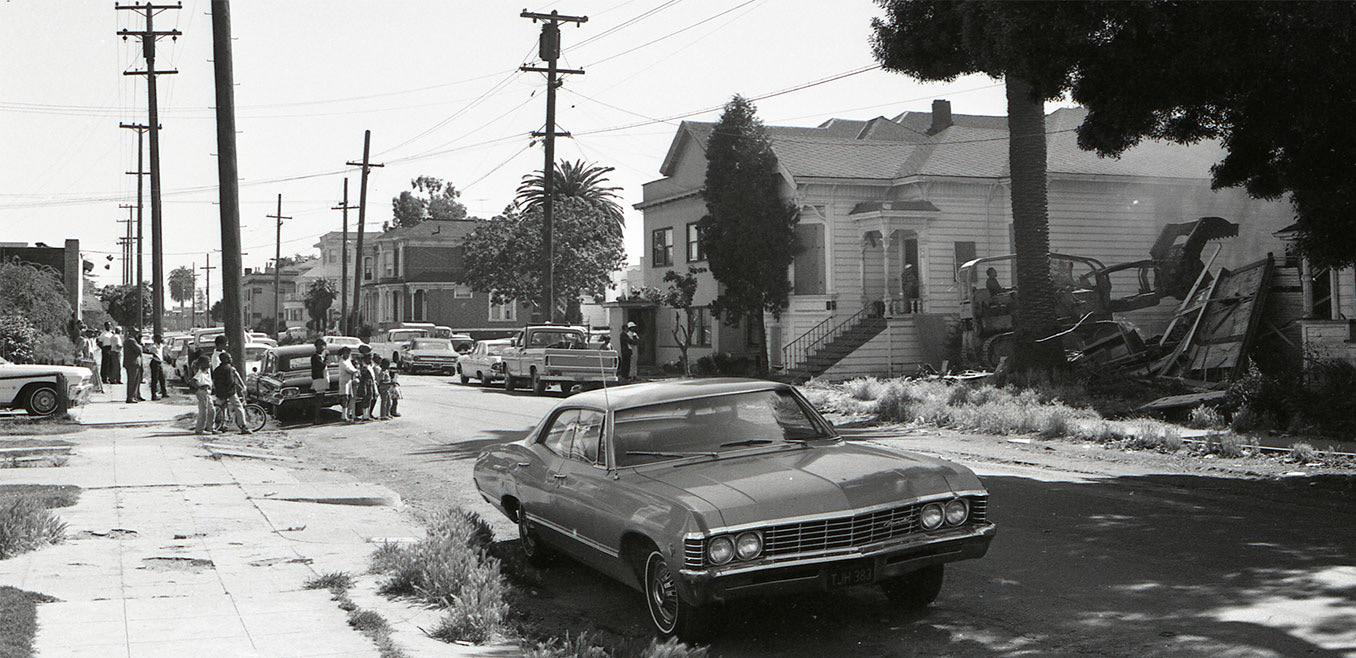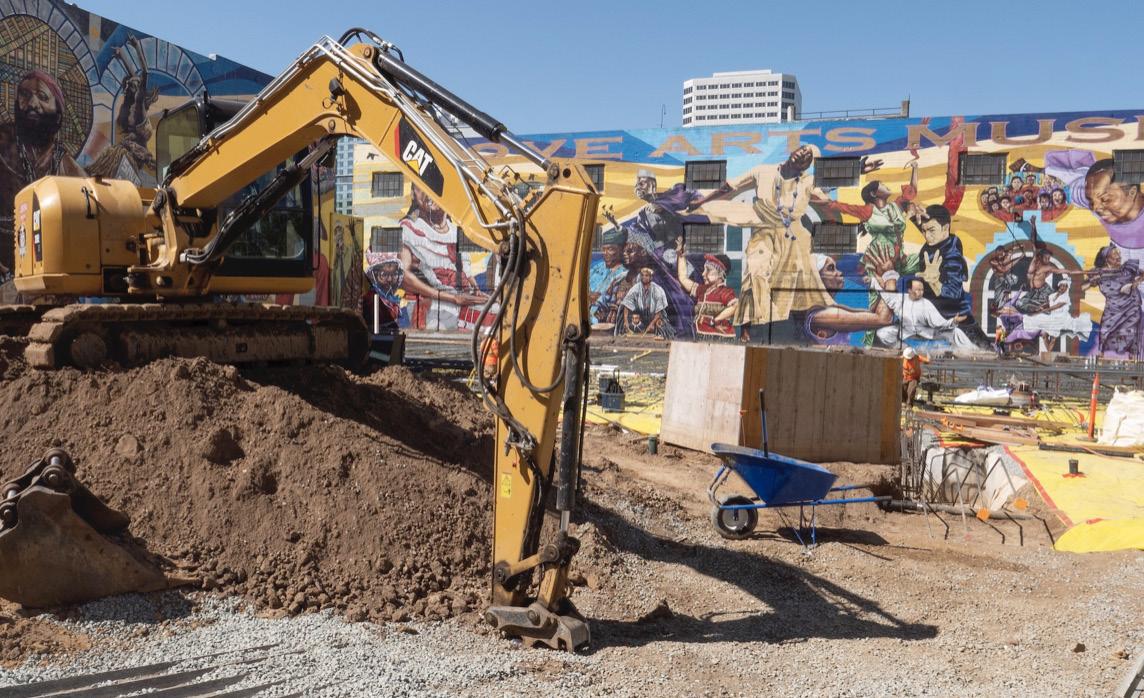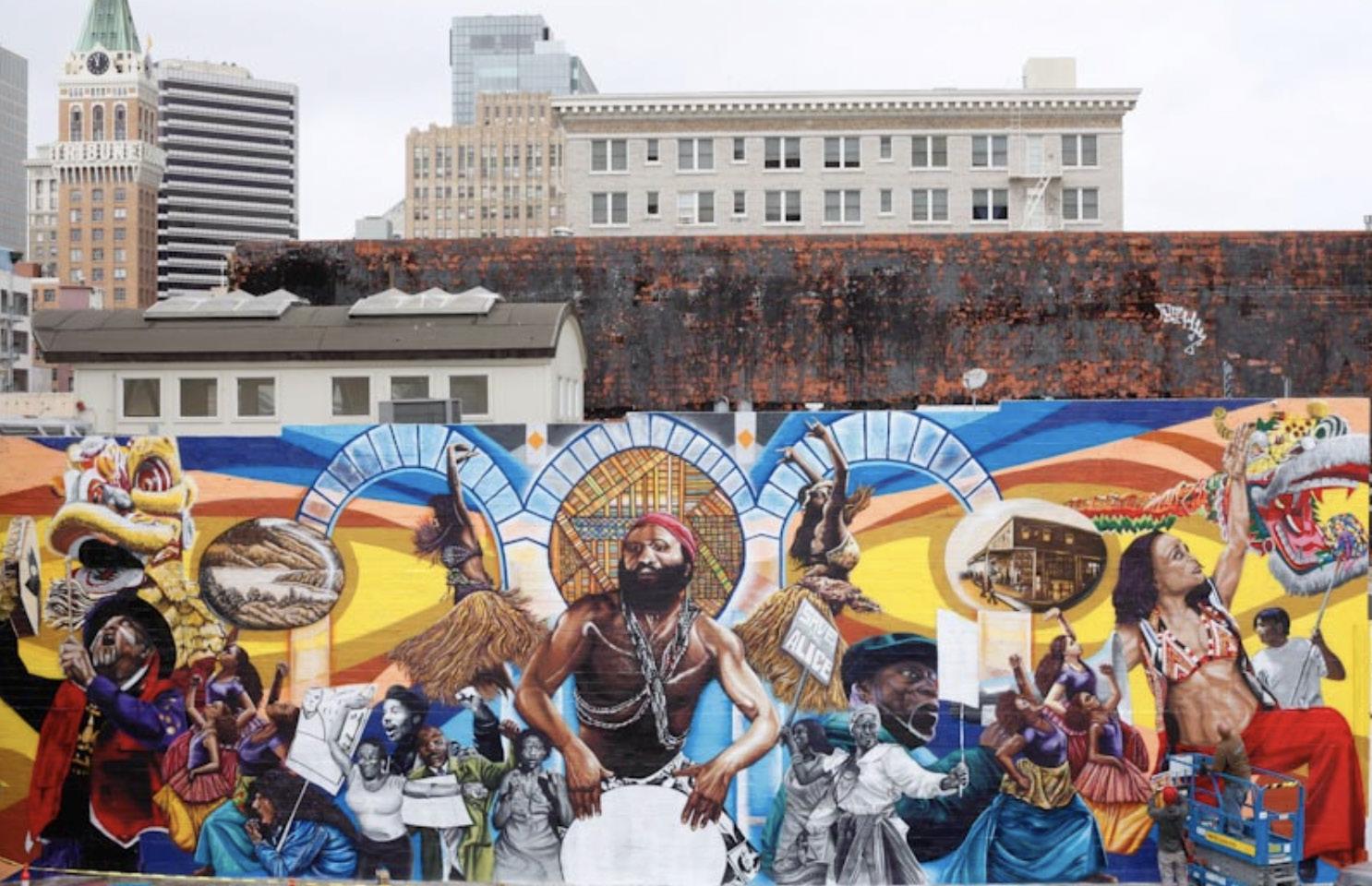
3 minute read
introductions
Oakland, CA– a city shaped by waves of immigration and industry, colonization and capitalism, culture, care, and resistance. If you look closely, its converging histories are written on its walls: freeway scars painted over with vibrant murals, telling stories both of structural violence and of continued community care and vibrance. This zine seeks to tell some of these interwoven stories to provide context for how the city could begin to heal some of the harms perpetrated through racist city planning policy, and to highlight the visions for a cultural zone in East Oakland that community members, artists, and activists are working towards.
We believe that creating spaces in our cities to celebrate culture and arts has the power to connect people and place, to transform our collective futures, and to re-root our world in beauty and joy. history and context: redlining, redevelopment, and “urban renewal” history and context: redlining, redevelopment, and “urban renewal”
Advertisement
This zine was created to support the work of the East Side Arts Alliance, the Deeply Rooted Collaborative, and the Unity Council, doing on the ground work to build these realities. We acknowledge that we are not residents of Oakland, and intend to use our privilege as UC Berkeley students to uplift the work and stories of these communities, not to speak for them. We step into their space with open minds and hearts to recognize the pain caused through generational injustices. We are here to engage in their long lasting fight for representation of cultural arts within Oakland, as a form of resilience and not as a marketing tactic.
Further, we would like to acknowledge that we reside on the territory of Xučyun, the land of the Chochenyo speaking Ohlone people. We recognize that, as residents of Alameda County, we benefited and continue to benefit from the use and occupation of this land. We want to make visible the Native peoples who have had, and contine to have, their voices, rights, and land stolen: each of the structures of injustice that we discuss in this zine are rooted in colonialism; efforts for restoration must be decolonial. By offering this land acknowledgement, we affirm Indigenous sovereignty and commit to amplify the beauty of cultural diversity.

Above:

Redlining maps and discriminatory lending policies segregate Black and Brown communities in areas with no access to economic opportunity, shaping the social geographies and lived experiences of Oakland residents into the present day.
Freeways and urban renewal cut through thriving Black and Brown neighborhoods labeled as “undesireable” and replace them with barren roadways and housing developments. As homes and businesses are bulldozed, communities are separated from each other and from economic and social opportunity.

Children watch as a house gets bulldozed; West Oakland 1968

City planning has been an intentional force for racial violence in Oakland, but not without community resistance.
Toward Downtown from West of Brush St., 1956 and 2015.

“The redevelopment of Oakland in the 1960s leaves us with a rich picture in which racialized lending practices and discriminatory zoning laws created urban blight, but also instigated a lasting and radical liberation movement,” -- Moriah Ulinskas, Places Journal from the archives: emory douglas & the black panthers from the archives: emory douglas & the black panthers art as resistance art as resistance art as resistance art as restoration art as restoration art as restoration today in oakland: Alice and 14th St. today in oakland: Alice and 14th St.

Revolutionary Artist of Black Panther Party, Minister of Culture … Douglas’s work was “to provoke a new consciousness in the community. His work revealed the causes of oppression and most importantly, encouraged the self-empowerment necessary to bring about change,” (Black Panther, the Revolutionary Art of Emory Douglas p 20).
Art has long been a tool to bring people together, to give a voice to those who would otherwise go unheard, and to make visible and possible a future that was previously unimaginable.
Cultural Arts
Cultural Arts
Mural
Mural
Arts are the only universal forms of expression and communication. The designers of this mural captured the prevailing historical forces of culture within every one of Oakland’s corners while connecting with the community’s needs for how they wanted to be represented. They included riots from the Malonga Casquelourd Center for the Arts, the story of Chinese immigration from the Seniors in Hotel Oakland, and other stories from community neighbors to the mural.




Unfortunately, the murals are not visible anymore due the construction of a large apartment complex in the parking space. The mural brought the communities together to begin a movement in which they danced to the Oakland planning commission’s office, but the office decided to go through with the process disregarding the community’s voice.
The mural was not only a catalyst for social change and addressing the issues that have been existing for centuries, but it was a pathway for different cultures to learn from one another and create relationships through artistic expression. It was a representation of hope and peace for one another.




